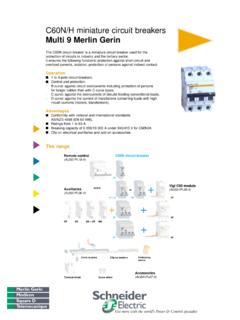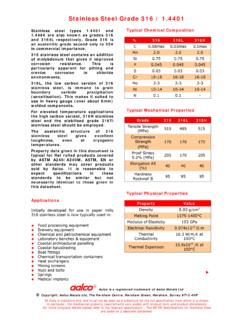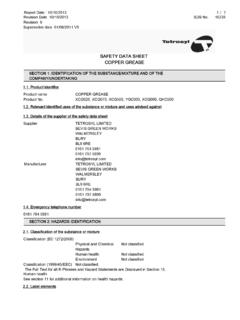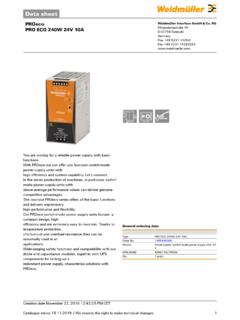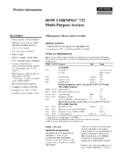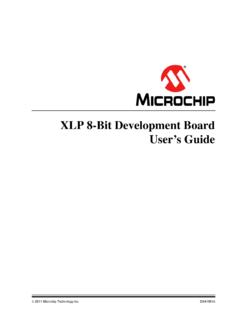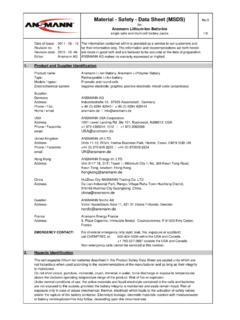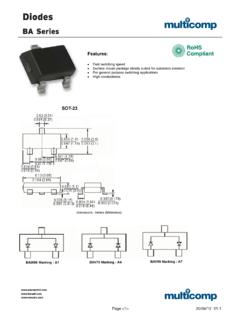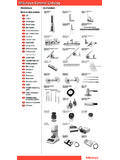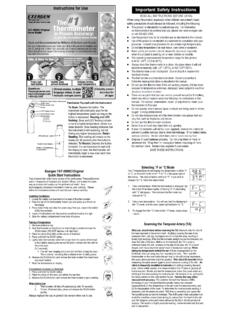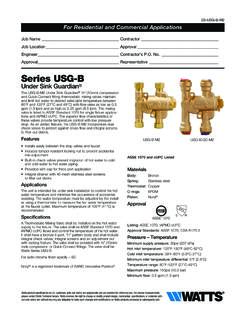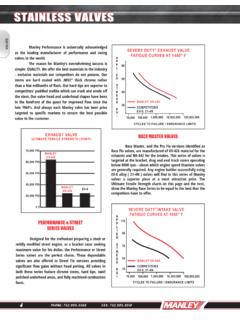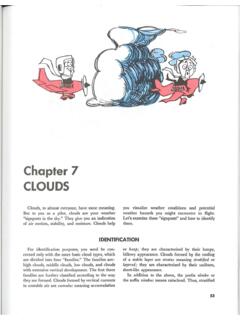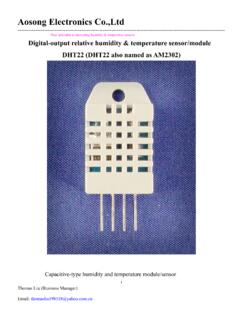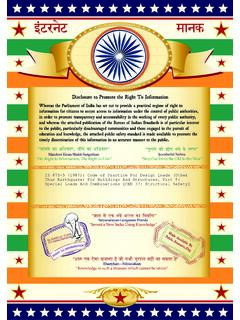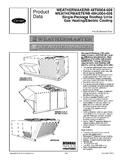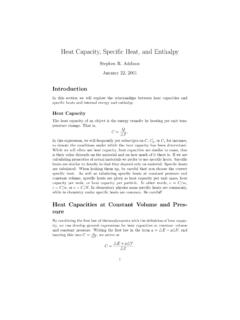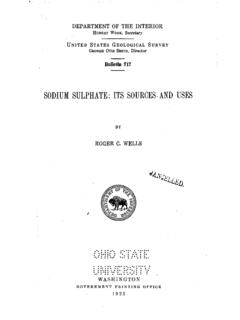Transcription of MULTILAYER CERAMIC CAPACITORS/AXIAL & RADIAL LEADED
1 MULTILAYER CERAMIC CAPACITORS/AXIAL . & RADIAL LEADED . MULTILAYER CERAMIC capacitors are available in a edges of the laminated structure. The entire structure is variety of physical sizes and configurations, including fired at high temperature to produce a monolithic LEADED devices and surface mounted chips. LEADED block which provides high capacitance values in a styles include molded and conformally coated parts small physical volume. After firing, conductive with axial and RADIAL leads. However, the basic terminations are applied to opposite ends of the chip to capacitor element is similar for all styles.
2 It is called a make contact with the exposed electrodes. chip and consists of formulated dielectric materials Termination materials and methods vary depending on which have been cast into thin layers, interspersed the intended use. with metal electrodes alternately exposed on opposite TEMPERATURE CHARACTERISTICS. CERAMIC dielectric materials can be formulated with Class III: General purpose capacitors, suitable a wide range of characteristics. The EIA standard for for by-pass coupling or other applications in which CERAMIC dielectric capacitors (RS-198) divides CERAMIC dielectric losses, high insulation resistance and dielectrics into the following classes: stability of capacitance characteristics are of little or no importance.
3 Class III capacitors are similar to Class Class I: Temperature compensating capacitors, II capacitors except for temperature characteristics, suitable for resonant circuit application or other appli- which are greater than 15%. Class III capacitors cations where high Q and stability of capacitance char- have the highest volumetric efficiency and poorest acteristics are required. Class I capacitors have stability of any type. predictable temperature coefficients and are not affected by voltage, frequency or time.
4 They are made KEMET LEADED CERAMIC capacitors are offered in from materials which are not ferro-electric, yielding the three most popular temperature characteristics: superior stability but low volumetric efficiency. Class I C0G: Class I, with a temperature coefficient of 0 . capacitors are the most stable type available, but have 30 ppm per degree C over an operating the lowest volumetric efficiency. temperature range of - 55 C to + 125 C (Also known as NP0 ). Class II: Stable capacitors, suitable for bypass X7R: Class II, with a maximum capacitance or coupling applications or frequency discriminating change of 15% over an operating temperature circuits where Q and stability of capacitance char- range of - 55 C to + 125 C.
5 Acteristics are not of major importance. Class II Z5U: Class III, with a maximum capacitance capacitors have temperature characteristics of 15% change of + 22% - 56% over an operating tem- or less. They are made from materials which are perature range of + 10 C to + 85 C. ferro-electric, yielding higher volumetric efficiency but less stability. Class II capacitors are affected by Specified electrical limits for these three temperature temperature, voltage, frequency and time. characteristics are shown in Table 1.
6 SPECIFIED ELECTRICAL LIMITS. Temperature Characteristics Parameter C0G X7R Z5U. Dissipation Factor: Measured at following conditions. C0G 1 kHz and 1 vrms if capacitance >1000pF. 1 MHz and 1 vrms if capacitance 1000 pF ( @ 25V). X7R 1 kHz and 1 vrms* or if extended cap range vrms Z5U 1 kHz and vrms Dielectric Stength: times rated DC voltage. Pass Subsequent IR Test Insulation Resistance (IR): At rated DC voltage, 1,000 M F 1,000 M F 1,000 M F. whichever of the two is smaller or 100 G or 100 G or 10 G.
7 Temperature Characteristics: Range, C. -55 to +125 -55 to +125 + 10 to +85. Capacitance Change without 0 30 ppm/ C 15% +22%,-56%. DC voltage * MHz and 1 vrms if capacitance 100 pF on military product. Table I. 4 KEMET Electronics Corporation, Box 5928, Greenville, 29606, (864) 963-6300. APPLICATION NOTES FOR MULTILAYER . CERAMIC CAPACITORS. ELECTRICAL CHARACTERISTICS The variation of a capacitor's impedance with frequency The fundamental electrical properties of MULTILAYER determines its effectiveness in many applications.
8 Application Notes CERAMIC capacitors are as follows: Dissipation Factor: Dissipation Factor (DF) is a mea- sure of the losses in a capacitor under AC application. It is the Polarity: MULTILAYER CERAMIC capacitors are not polar, and may be used with DC voltage applied in either direction. ratio of the equivalent series resistance to the capacitive reac- tance, and is usually expressed in percent. It is usually mea- Rated Voltage: This term refers to the maximum con- sured simultaneously with capacitance, and under the same tinuous DC working voltage permissible across the entire conditions.
9 The vector diagram in Figure 2 illustrates the rela- operating temperature range. MULTILAYER CERAMIC capacitors tionship between DF, ESR, and impedance. The reciprocal of are not extremely sensitive to voltage, and brief applications the dissipation factor is called the Q , or quality factor. For of voltage above rated will not result in immediate failure. convenience, the Q factor is often used for very low values However, reliability will be reduced by exposure to sustained of dissipation factor.
10 DF is sometimes called the loss tangent . voltages above rated. or tangent d , as derived from this diagram. Capacitance: The standard unit of capacitance is the farad. For practical capacitors, it is usually expressed in ESR. Figure 2. microfarads (10-6 farad), nanofarads (10-9 farad), or picofarads (10-12 farad). Standard measurement conditions are as O. follows: DF = ESR. Xc Class I (up to 1,000 pF): 1 MHz and VRMS . maximum. Class I (over 1,000 pF): 1kHz and VRMS. X. c . maximum. 1. Class II: 1 kHz and VRMS.
